News Around NIDDK
NIDDK Central Repositories amplify research discoveries
Institute offers data, samples and other resources from existing studies for reuse
By Matt Forke
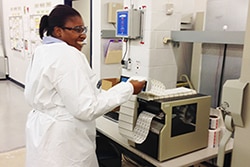
Reinventing the wheel. Starting from scratch. Going back to square one. All pitfalls that researchers can often avoid thanks to the NIDDK Central Repositories. Designed to help researchers save time and start with a leg up, these resources provide an extensive archive of biosamples, research and existing, vetted data.
Repositories can provide seasoned investigators with data sets and samples from similar populations for comparative purposes. They can also offer a head-start for new researchers who want to build upon others’ work. Available resources include biospecimens such as stored blood and urine, data, study protocols and more. The resources are created from publicly available information and biosamples provided by NIDDK-funded clinical investigators, projects and publications, from studies of diabetes, obesity, liver and kidney diseases, among others.
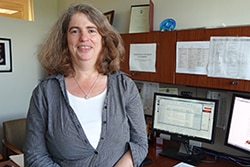
"We follow a curatorial process to make it usable and sharable for others," said Dr. Rebekah Rasooly, the project officer overseeing NIDDK Central Repositories and a program director within the NIDDK Division of Kidney, Urologic, and Hematologic Diseases (KUH). "The alternative is having to search for data that might not be accessible or properly stored, which can easily turn into a scavenger hunt."
Below are just a few examples of NIDDK Repository resources:
NASH Consortium
The Clinical Research Network in Nonalcoholic Steatohepatitis (NASH Consortium) focuses on improving understanding and treatment of NASH, a common, often "silent" liver disease. NASH resembles alcoholic liver disease but occurs in people who drink little or no alcohol. Affecting 2 to 5 percent of Americans, it can lead to permanent liver damage.
"The data we're collecting on patients in the NASH Consortium is rigorously phenotyped, and most of the patients have a medical confirmation of their liver disease and stage," said Dr. Edward Doo, who oversees basic research grants related to liver diseases in NIDDK's Division of Digestive Diseases and Nutrition. "By collecting this data over time and from a population that is frequently sampled, we're able to provide a more accurate depiction of the natural history of fatty liver disease."
Chronic Renal Insufficiency Cohort (CRIC)
The Chronic Renal Insufficiency Cohort (CRIC) Study is an ongoing prospective study designed to examine risk factors for progression of chronic kidney disease (CKD) and cardiovascular disease among adults with CKD, half of whom were diagnosed with diabetes.
Study participants undergo extensive clinical evaluation resulting in a broad array of information, including multiple measures of kidney function, cognitive function, health behaviors, and pulse wave velocity, among many others.
"We established this study about 15 years ago and linked the biological samples to the long-term outcomes of participants," said Dr. John Kusek, who manages epidemiological studies and clinical trials in KUH. "CRIC has a large sample size and is rich in data and events such as end-stage renal disease over a long period."
Diabetes Prevention Program Outcomes Study (DPPOS)
About 15 years ago, results of the Diabetes Prevention Program showed that lifestyle changes of diet and activity, or separately the drug metformin, were effective in reducing or delaying type 2 diabetes in those at high risk. At the DPP’s conclusion, all 3,200 participants were offered a modified lifestyle intervention, and the metformin group was offered continued medication.
Researchers followed participants to examine the durability of diabetes prevention as part of the DPP Outcomes Study (DPPOS), building an archive of invaluable data on when the participants were developing type 2 diabetes, said Dr. Barbara Linder, who helps oversee the DPPOS cooperative agreements from NIDDK’s Division of Diabetes, Endocrinology, and Metabolic Diseases.
"Outside the study, many people’s type 2 diabetes may not be diagnosed for 5-10 years after they develop the disease," Linder said. "With the DPPOS cohort, researchers have access to data from a study that can date the onset of type 2 diabetes to within six months."
Indo-U.S. diabetes research collaboration celebrates progress
By Eleanor Hoff
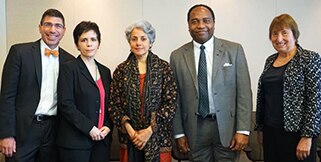
NIDDK Director Dr. Griffin P. Rodgers and staff met with Dr. Soumya Swaminathan, secretary of the Department of Health Research and Director General of the Indian Council of Medical Research (ICMR), in April to discuss joint accomplishments and future opportunities in diabetes research under an agreement signed by the United States and India in 2012.
Both the United States and India face enormous public health challenges from diabetes and its devastating health complications, including eye, kidney, heart, and nerve disease. According to the International Diabetes Federation, an estimated 29 million U.S. adults and 69 million Indian adults have diabetes—about 11 and 9 percent of the respective populations.
"Collaboration between the two countries provides unique opportunities to delve into areas still not fully understood, such as the influence of genetics, ethnicity, environment and other factors on development of diabetes and its complications," said Rodgers. "It also enables the two nations to leverage complementary strengths and resources in studies that could lead to improved health for people with or at risk for diabetes—including the growing population of people of South Asian ancestry within the United States."
Under the agreement, the NIDDK and ICMR have identified and tackled questions of scientific and public health interest in both countries and fostered cooperation between the diabetes research communities they support. A key accomplishment discussed at the April meeting is a set of newly minted Indo-U.S. diabetes research partnerships: In March, teams of U.S. and Indian scientists received awards from the NIDDK and ICMR, respectively, to collaborate in studies of diabetes in youth, genetics of diabetes in South Asians, and the role of environmental pollutants in diabetes risk. These inaugural awards stem from efforts following a 2013 diabetes research workshop in New Delhi co-led by NIDDK and ICMR.
The NIDDK and ICMR continue to discuss opportunities to pursue in areas of mutual interest, such as the convergence of diabetes and infectious diseases.
"From these promising beginnings, we look forward to continued growth of this international collaboration," said Rodgers.
Artificial pancreas moves closer to viability
By Amy F. Reiter
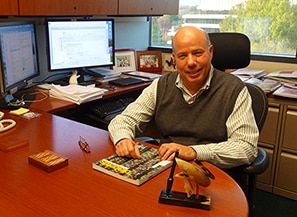
Imagine sleeping through the night without worry. For the more than a million people with type 1 diabetes and their loved ones, it’s a dream that may be on the cusp of reality.
An artificial pancreas replaces manual glucose testing and delivery with a single device that monitors real-time blood glucose levels and provides insulin or a combination of insulin and glucagon automatically. The device can also be monitored remotely by parents or medical staff.
"The studies funded by the NIH/NIDDK have begun with tight supervision of the system performance, starting with pilot studies performed in clinical centers and gradually moving to free-living situations," said Dr. Guillermo Arreaza-Rubín, the project officer for artificial pancreas studies funded by NIDDK’s Division of Diabetes, Endocrinology and Metabolic Diseases (DEM).
That means trials are moving into the real world – homes, camps and even a ski slope, where researchers are testing participants to understand how the device works during exercise.
The studies are also moving into more diverse populations—infants, older adults, pregnant women, people with type 2 diabetes—and testing in a range of conditions, including through puberty and after exercise, to learn about how individuals are likely to react to the devices and vice versa. They’re also testing what type of device might be best for whom, with insulin-only and bihormonal (insulin and glucagon) systems in development.
At a two-day workshop in July, representatives from NIH, FDA, JDRF, Helmsley Trust, Diabetes Technology Society, academia and others came together to discuss what advances were happening and what needed to happen to move the artificial pancreas from a great idea to a device that is not only safe and effective, but accessible and affordable.
It was the fourth such workshop, and only three years after the last one, the field has emerged leaps ahead. "Things have moved so fast, it’s really exciting," said Dr. Bruce Buckingham of Stanford University, an NIDDK grantee and presenter at the meeting.
"We have seen remarkable progress with this new treatment approach," said DEM Director Dr. Judith Fradkin. "These studies have shown very positive results thus far for improving management of type 1 diabetes with less hypoglycemia and more time spent at optimal glucose levels."
"The evidence shows that the devices can be even safer than the current standards of care regarding insulin delivery," Arreaza-Rubín said.
Over the next few years, the field will work toward developing a device ready for FDA approval and public use. Arreaza-Rubín envisions the first platforms will offer different delivery options, such as insulin-only or bihormonal, or differing levels of automation depending on the user. As the technology matures, its algorithms, functions, user-friendliness and automation options should evolve as well, he said.
To many with type 1, the artificial pancreas can’t come soon enough.
Alecia Wesner, a type 1 diabetes patient representative at the workshop and veteran of two artificial pancreas trials, described the joy of getting to sleep through the night with "perfect blood sugars."
She also expressed sadness over the end of the trial and having to return the device. "I didn’t want to give it back!"
Getting to know: Dr. Michael Flessner
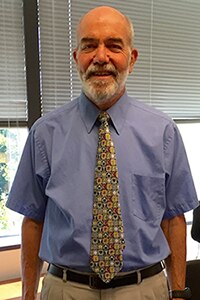
Michael Flessner, M.D., Ph.D., is a program director in the NIDDK Division of Kidney, Urologic, and Hematologic Diseases. He oversees the Kidney Inflammation and Inflammatory Diseases program and is a project scientist for the NIH Common Fund‘s Microphysiological Systems program, also known as the tissue chip project. Flessner recently spoke with January Payne about his diverse career.
Why did you decide to become a nephrologist?
When I began medical school at the University of Maryland at 33 years old, I already had had an 11-year career as a U.S. Coast Guard Officer, including a tour in Vietnam. I’d also received my Ph.D. in chemical engineering, through which I studied a new drug treatment for ovarian cancer. During my residency, my experiences in oncology made it clear I liked to remove poisons from people as is done during dialysis for kidney failure, so I chose to pursue nephrology.
What are you most proud of in your work since coming to NIH?
I have a number of different consortia that I’m keeping track of or trying to motivate, and most have been successful in recruiting participants. But I’m most proud of working with individual investigators. I always try to be responsive to individual applicants as well as consortia members. When I was an NIH-funded investigator for 18 years, I had a number of different grants—so I understand grantees’ perspectives, problems and frustrations. I try to work with them to improve their situations.
What advice would you give someone interested in pursuing a career in research?
I would ask them to think seriously about what they’d like to do. Are they interested in patient-oriented research or basic research? If they want to do basic research—just as I did when I started out—they need to spend three to five years in a good basic lab. On the clinical side, they should try to get into a system that fosters clinical research. They should aim to work for an experienced mentor who knows how to collaborate with patients and design clinical trials.
With either route, the way you prepare for a successful career is by working hard and spending time with a good mentor: someone who is there for you, the patients and the laboratory.
What is your hope for the next decade of research in your area?
I hope the Kidney Precision Medicine Project really takes off. I hope that we’ll have the opportunity to study kidney biopsies from a great variety of participants, that investigators process that tissue containing molecular signatures to be traced to whatever disease the patients have, and that these results produce targets to develop new therapies.
Generally, I’d like to see a continued push toward chronic kidney disease (CKD) prevention, rather than having to treat patients in later stages. We are trying to look at people with early-stage CKD so that we can understand it before it slowly but totally destroys the kidneys. CKD takes a big toll because it influences all systems, including the cardiovascular system and the brain. If preventing CKD from progressing to later stages becomes more of a research focus in the next 10 years, I think we could help alleviate a tremendous health and economic burden for the American people.
New progress report on the Special Diabetes Program available
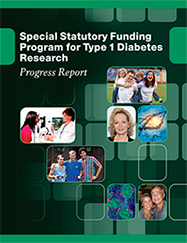
A new report highlighting progress achieved by the Special Statutory Funding Program for Type 1 Diabetes Research is available. The report highlights exciting achievements made in type 1 diabetes research and improvements in the health and lives of people with the disease. Research supported by the Special Funding Program has led to new therapies for diabetic eye disease, novel strategies to replace lost beta cells, and innovative devices for blood glucose management, among other advances. The report describes these and other pioneering discoveries, both emerging and expected to emerge from this unique funding program.
Ongoing since 1998, the Special Funding Program is an appropriation from Congress. Research goals supported by this program include identifying the causes of the type 1 diabetes as a step toward developing prevention and treatment strategies, finding therapies for the disease and its complications, and developing technologies for management such as the artificial pancreas.
Three NIDDK grantees receive early career awards
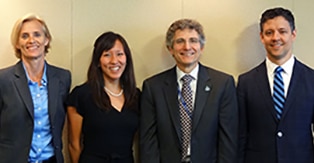
Three NIDDK-funded researchers received the Presidential Early Career Awards for Scientists and Engineers (PECASE). PECASE is the highest honor given by the United States government to scientists and engineers in the early stages of their research careers. From left, Dr. Camilla Forsberg, Dr. Kay Tye, NIDDK Deputy Director Dr. Gregory Germino and Dr. David Pagliarini commemorate the occasion.
"These scientists exemplify the high caliber of research and innovation that are the hallmarks of the NIDDK grant program, and we’re looking forward to many more years of accomplishments from them," Germino said.
Forsberg is the co-director of the Institute for the Biology of Stem Cells and a professor of biomolecular engineering at the University of California, Santa Cruz. Her research examines hematopoietic stem cells, which give rise to all other blood cells.
Tye is an assistant professor at the Picower Institute for Learning and Memory, Department of Brain and Cognitive Sciences at the Massachusetts Institute of Technology. Her research explores the brain activity involved in unhealthy eating choices and habits.
Pagliarini is director of metabolism at the Morgridge Institute for Research and an associate professor of biochemistry at the University of Wisconsin-Madison. His research focuses on the types of dysfunction of mitochondria that can contribute to diseases such as type 2 diabetes, cancer and heart disease.
NIDDK staff briefs Congressional staff on type 1 diabetes research
On June 8, NIDDK Director Dr. Griffin P. Rodgers and Dr. Judith Fradkin, director of the NIDDK Division of Diabetes, Endocrinology, and Metabolic Diseases, briefed Congressional staff on progress in type 1 diabetes research. At the request of the Senate Diabetes Caucus, Rodgers described how the Special Statutory Funding Program for Type 1 Diabetes Research, a program administered by NIDDK, supports research in this area, including to identify the genetic and environmental causes of type 1 diabetes, to prevent the disease, to develop better therapies and management tools, and to prevent and treat the complications of type 1 diabetes.
Fradkin discussed examples of progress such as headway by The Environmental Determinants of Diabetes in the Young (TEDDY) study; improved methods to assess disease risk; and promising advances in islet transplantation, a potential treatment for people with difficult-to-control type 1 diabetes.
More about the Special Diabetes Program, including additional research advances, can be found in the new Progress Report (see related news item), which was released at the briefing. Special Diabetes Program grantees Dr. Neil Bressler and Dr. Edward Damiano also presented exciting results in treatment of diabetic eye disease and in artificial pancreas development, respectively.
Diabetes portal adds data, more powerful search tools
By Krysten Carrera
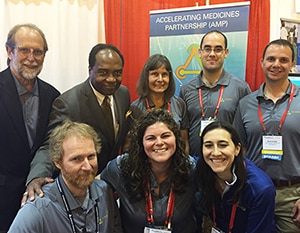
The AMP® Type 2 Diabetes Knowledge Portal online discovery engine has expanded data and search capabilities to quicken the pace of scientific advancement. A product of NIH’s Accelerating Medicines Partnership® (AMP) program for type 2 diabetes, the portal – which opened in 2015 – enables user-friendly exploration of international networks of human genetic information linked to diabetes.
"Data from more than 100,000 DNA samples—culled from research supported by NIH and elsewhere—are now at people’s fingertips," said Dr. Philip Smith, deputy director of NIDDK’s Division of Diabetes, Endocrinology, and Metabolic Diseases. "Our portal unites the scientific community around a desire to learn how and why people develop type 2 diabetes and its complications."
Using a Google account, anyone can now search for information by gene, genetic variant and region, and access summaries of genetic variants. Users can also run customized genetic analyses using versatile tools. Individual data remains confidential.
"The strength of this resource depends on community participation, so I encourage folks to submit data, comments and other materials," said NIDDK Director Dr. Griffin P. Rodgers.
The portal is already facilitating discoveries that are accelerating understanding of how a person’s genetic background contributes to diabetes risk. Now including data from European collaborators, administrators continue to expand the network to include more national and international content. The portal is also available in Spanish.
"Universal access to genetic information is sparking novel insight into diabetes, potentially leading to advances in therapies and treatments," said Smith. "We look forward to the possibilities."
